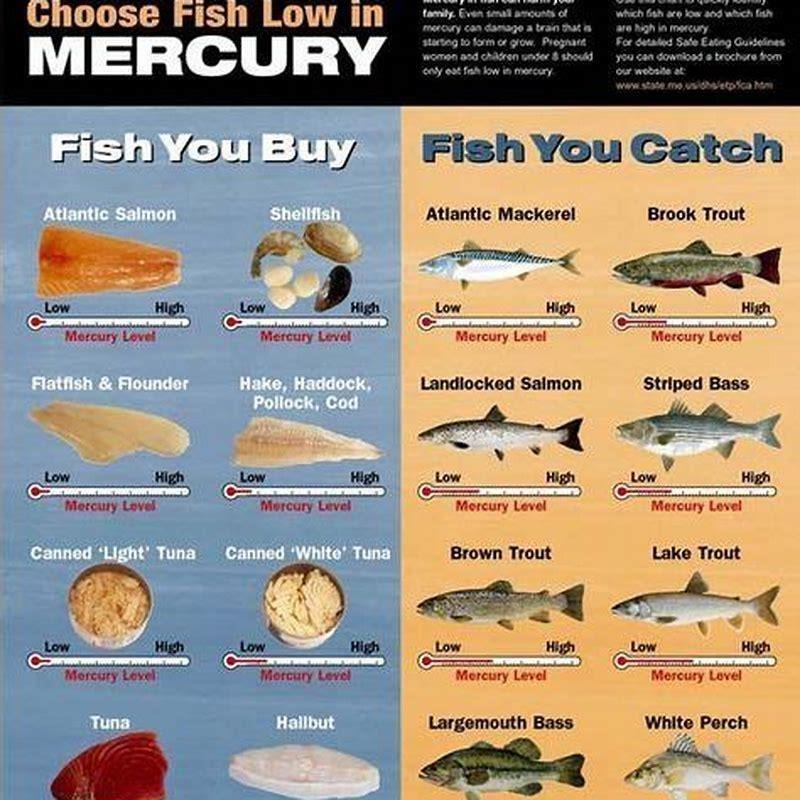
As the culinary world embraces the plethora of seafood options, it becomes imperative to consider not only the flavor but also the safety of what is being consumed. Among myriad concerns, the presence of mercury in fish stands out, raising questions regarding health, environmental impact, and dietary choices. While fish offers a wealth of nutrients, certain varieties contain alarmingly high levels of mercury, a toxic metal linked to severe health complications. This extensive guide elucidates which fish harbor the lowest amounts of mercury, thus promising a shift in perspective towards safer seafood selections.
The genesis of mercury pollution primarily stems from industrial activities and the burning of fossil fuels, resulting in atmospheric deposition that eventually makes its way into aquatic ecosystems. Within these environments, mercury undergoes a transformation into methylmercury, a highly toxic form that bios accumulates in fish. The concentration of mercury in fish varies considerably, influenced by their position in the food chain, lifespan, and habitat. Predatory fish, for instance, tend to accumulate higher levels of mercury, primarily due to biomagnification, whereby smaller fish with lower mercury concentrations are consumed by larger fish, leading to an increased concentration of the toxin in the larger predators.
To safeguard consumers, regulatory bodies have outlined guidelines on fish consumption, specifically emphasizing mercury levels. Not all fish are created equal when it comes to mercury content. A plethora of fish species presents a safer alternative for conscious consumers. Hereafter, we delve into the seafood that traditionally boasts the lowest mercury levels, transforming your seafood selection process and enhancing both health and culinary experience.
One of the standout contenders in the realm of low-mercury fish is the humble sardine. This small, oily fish is not only rich in omega-3 fatty acids but also exhibits minimal mercury accumulation due to its short lifespan and low trophic level. Regular consumption of sardines can impart numerous health benefits, including improved cardiovascular health and enhanced cognitive function, making them a reliable inclusion in any diet.
Another prudent option is the anchovy. These tiny fish are multifaceted—packed with nutrients, they also thrive in oceanic waters where mercury concentrations tend to be lower. Their small size and rapid reproduction contribute to their low mercury levels, and their distinctive flavor enhances a variety of dishes, from salads to pizza, thus ensuring that consumers can enjoy both health and taste.
Additionally, trout—particularly farmed trout—features prominently on the list of low-mercury fish. Farmed varieties, especially those from environments managed to limit contamination, typically exhibit significantly lower levels of mercury compared to their wild counterparts. Trout also offers a delectable and versatile taste profile, seamlessly fitting into an array of culinary preparations, thus broadening dining possibilities without compromising health safety standards.
Salmon, specifically wild-caught varieties, can also be viewed as a relatively safe option. While it is vital to differentiate between wild and farmed species, finding sustainable sources of wild salmon can yield a fish that is lower in mercury, alongside being an excellent source of beneficial omega-3 fatty acids. These nutrients have been linked to anti-inflammatory properties and improved neurological health, making salmon a wise choice for both health-conscious individuals and seafood lovers alike.
Conversely, one should tread carefully when considering larger fish such as shark, swordfish, and king mackerel, all of which harbor elevated levels of mercury due to their position atop the aquatic food chain. These species, while often sought after for their size and taste, can pose health risks if consumed frequently. Pregnant women, nursing mothers, and young children are especially vulnerable to the adverse effects of mercury exposure, underscoring the importance of awareness and informed choices.
Aside from individual choices, fostering a collective consciousness around sustainable fishing practices emerges as paramount. Ocean degradation and overfishing exacerbate the mercury issue, thus advocating for responsible seafood sources can mitigate mercury accumulation in the food chain. Consumers are encouraged to seek out eco-certified seafood options that prioritize sustainability and environmental protection, thereby enhancing both individual and shared health trajectories.
The conversation surrounding mercury levels in fish is not merely a matter of nutrition but intertwines with ecological stewardship—choosing low-mercury fish stands at the intersection of personal health and environmental responsibility. By emphasizing fish populations that are not only low in mercury but also sustainably sourced, one contributes to the reduction of mercury in aquatic ecosystems, ideally leading to healthier ocean flora and fauna.
As you navigate the world of seafood, understanding the nuances of mercury levels provides a powerful asset. Knowledge is a catalyst for change, affording you the ability to make informed decisions that benefit both personal health and environmental integrity. By selecting species such as sardines, anchovies, and farmed trout, your palette can flourish while drastically minimizing mercury exposure. Transitioning to these safer options is not merely a dietary choice; it is an influential step towards fostering a healthier world. Armed with this knowledge, you can confidently indulge in the ocean’s bounty without compromising your health.
Ultimately, embracing fish with low mercury content allows for culinary exploration while ensuring the well-being of oneself and the planet. Prioritizing health and sustainability can transform dietary habits, creating a harmonious balance between indulgence and mindfulness. The bounty of the sea awaits, encouraging you to embark on a flavorful journey towards healthier choices.
